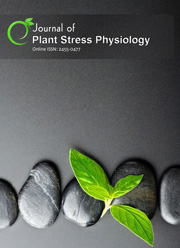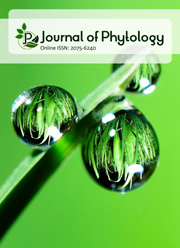Impacts of drought and herbicide stress on seed germination and early seedling growth in a legume crop mung bean (Vigna radiata L.)
DOI:
https://doi.org/10.25081/jpsp.2021.v7.7150Keywords:
Seed germination, Mung bean, Osmotic stress, Herbicide stressAbstract
Abiotic stress such as drought and agrochemicals leads the drastic reductions in legume yields, hence, in order to mitigate the loss of yields due to abiotic stresses, the production of stress tolerance genotypes of the legumes could be a rewarding approach. Therefore, the aim of the present study was to evaluate the drought and herbicide stress effects under ex-vitro conditions on seed germination and early seedling growth in a legume crop mung bean (Vigna radiata L.). To begin with, drought stress was induced by employing various concentrations of mannitol (50mM, 100mM, 250mM, 500mM, 750mM, and 1000mM) and polyethylene glycol (PEG-5%, 10%, 15%, 20%, and 25%) while during herbicide stress experiments, dicamba (3,6-dichloro-2-methoxybenzoic acid) and picloram (4-Amino-3,5,6-trichloro-2-pyridine carboxylic acid) were considered in various concentrations (5mg/L, 25mg/L, 50mg/L, and 100mg/L) of each. Moreover, data were collected as partial and full seed germination after 3- and 7-days of stress treatments respectively. After 7-days of mannitol stress treatments, results reveals that even the high concentration of mannitol (500mM) could be proved as weak osmotic stressor for seed germination (35%±0.14) in comparison to control (91%±0.74) while further increase in mannitol concentration (750mM) was proved to be lethal, toxic and inhibits seed germination completely. Furthermore, in comparison to mannitol, PEG turns out as strong osmotic stressors and (15%) of PEG was proved to very lethal for seed germination. Even during early seedling growth, increased concentrations of both mannitol and PEG were found to be inhibitory. Among two herbicides, the result shows that both herbicides (dicamba and picloram) were proved to be completely toxic and lethal even at very low concentrations (5mg/L) and induced abnormal seed germination and inhibited completely seedling growth. However, the inhibitory response of picloram herbicide stress on seed germination was found to be more pronounced and severe than dicamba herbicide. Hence, the present study reveals that in comparison to mannitol, PEG turns out as a strong osmotic stressor while picloram proves to be a relatively more toxic herbicide than dicamba for seed germination. Additionally, drought stress induced seedlings on transfer to soil exhibit inhibited growth under continuous irrigation with either mannitol or PEG solutions.
Downloads
Published
How to Cite
Issue
Section
Copyright (c) 2021 Journal of Plant Stress Physiology

This work is licensed under a Creative Commons Attribution 4.0 International License.



 .
.